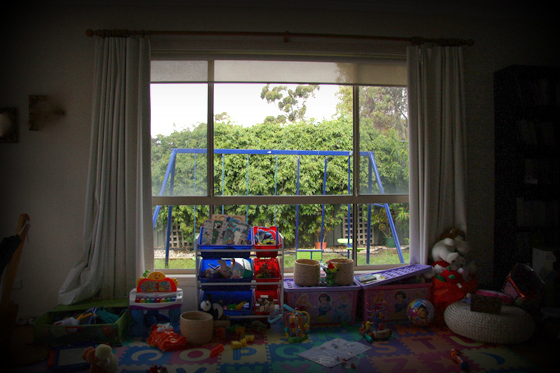
This article is part of our February theme, which focuses on one of the great silences in the human rights conversation in Australia: Prisoners’ Rights. Read our Editorial for more on this theme.
There was scarring covering her arms, her legs and some on her face. Her lips were swollen. Burns to her arms, possibly from cigarettes, were visible. Chunks of flesh had been ripped from her forearm to the extent that you could almost see the bone. It appeared like an old wound that had made some effort to heal.
She had come to see us about her victim’s compensation claim. I asked her if the scarring and injuries to her arms were from the domestic violence she had been exposed to for years. She said it was from self-harm.
I suspect there were older scars beneath the surface, and of course the ones I could not see.
Her memory sometimes hazy, her eyes blood-shot. Was this from the medication?
This was the first time that we had met Adele (not her real name). It was during our regular visit to the prison that she came to speak to us about some of the horrors that she had experienced. She had been self-medicating for years, and was probably in prison for some drunken related offence.
Adele is not alone. Whilst women form the lowest prison population, they tend to be incarcerated for more minor offences, namely drug and alcohol-related infringements, than their male counterparts. Of course there are some exceptions. However, through our regular outreach to Darwin Correctional Centre, it sometimes becomes difficult to distinguish the victims from the offenders. We hear the long stories of their complex lives and journey to prison. Sometimes these women are in for harming others, mostly their partners, where they have retaliated through violence.
There are many women in prison that have experienced sexual, physical or child abuse or all three during their lives. In Australian prisons, a significant number of women have reported some form of abuse during their lifetime. It is estimated that 1 in 3 women in Australia will have experienced an unwanted sexual experience by the time they are 18 years of age. Further, it is estimated that one in five women have experienced sexual violence since the age of 15. These rates are expected to be much higher for women in prison. In fact, prison can sometimes be the first time that these women are able to access the many and diverse services that they need, and that their mental health and medical conditions are diagnosed.
Without this most basic need being met, it is difficult for clients to look meaningfully at fundamentals such as settling into a job.
These rates are higher again for Indigenous women compared to non-Indigenous women. In the NT Indigenous women make up approximately 83 per cent of the female prison population. Indigenous women are also more likely to be seriously injured than non-Indigenous women, and ten times more likely to be victims of homicide.
Sadly, Adele is fairly typical of women in prison: a thirty-something year old woman, a mother, a sister, a daughter, an aunt, at one time someone’s wife and lover, and maybe even grandmother. Whilst the female prison population is relatively low in the Northern Territory (NT) as compared to some other parts of the country, these women are more likely to have experienced some of the most horrendous conditions. Then, through a path that often involves homelessness, they enter prison.
This may get worse upon exiting prison, where without suitable accommodation and support, they find themselves homeless-again! Article 5 of the Universal Declaration of Human Rights states that: “Everyone has the right to a standard of living adequate for the health and well-being of himself and of his family, including food, clothing, housing and medical care and necessary social services…”
This is not a luxury, but a basic human right. You do not lose your basic human rights just because you have committed a crime and then been sent to prison. Unfortunately, prisoners are a group that don’t always inspire public sympathy or compassion. It’s as if once you have fallen to this way of life, there is no way back or forward, there’s no way out.
Yet these women could be someone we know, someone we love, or it could have been us. It’s not a thought that we wish to contemplate. It’s too foreign to imagine the violence, the prison.
Re-integration
In early 2010, the Prisoners Through-care Network was established in Darwin, to address the reintegration issues of prisoners. From this, evolved the Prisoners Reintegration Accommodation Working Group in 2010, in response to the particular severity of homelessness in the NT (the NT has the highest rate of homelessness in Australia with a rate of 272 per 10,000 people compared to the national rate of 53 per 10,000 people according to the 2006 Counting the Homeless Report). Suitable accommodation is pivotal to any person’s successful reintegration within the community, and essential for any person striving for an adequate standard of life.
The Prisoner’s Reintegration Working Group, which comprises the Top End Women’s Legal Service Inc (TEWLS), The Darwin Community Legal Service (DCLS), the North Australian Aboriginal Justice Agency (NAAJA), Mission Australia, NT Shelter and now FORWAARD (Foundation of Rehabilitation With Aboriginal Alcohol Related Difficulties), often discuss their frustration with the difficulty of locating suitable accommodation for clients once they exit prison.
Both Mission Australia and NAAJA have been specifically funded to provide a prison through-care program. They operate slightly differently, but essentially have the same aim. Recently, NAAJA’s Through-care program reached its second year. In it’s media release Samantha Taylor-Hunt explained that its program:
“… aims to help clients with the key issues that will be facing them upon their release. This might include things like housing, employment, counseling, re-linking them with their family and Centrelink. We hope that giving our clients support upon release will help them get their life back on track.”
Juveniles in Prison
In addition, NAAJA provides a much-needed Through-Care program to juveniles in Detention at the Don Dale Juvenile Detention Centre in Darwin. TEWLS together with FORWAARD also offers ongoing drug, alcohol & tobacco education to the youth at Don Dale. FORWAARD is also instrumental in trying to deliver the same program to as many high schools as possible. It’s important to start early. The old adage that ‘prevention is better than the cure’ holds true here.
The impact of incarceration on young offenders cannot be understated. But what do you do when for some their crimes are so terrible? How do you find the balance that is called justice, which is the role of the judiciary? This can mean so many things to different people. However, as Terry Byrnes from NAAJA Indigenous Through-care has pointed out, the fact remains that:
“Detention for juveniles is particularly injurious as the punishment of incarceration is heightened by the vulnerability of youth. Often the young person’s background is such that schooling and normal socialisation is conspicuously absent. Through-care’s aim is to give these young people a chance to reform their lives so that their early mistakes are just that and not a blueprint for their future. Through-care and Don Dale have worked together to make the young person’s time in detention one that is not solely characterised by loss.”
Homelessness after prison
Sending someone to prison isn’t the end of the story. NAAJA has recently reported that:
“Housing remains the most pressing systemic issue facing our clients following their release from custody. Homelessness in the greater Darwin area is at a critical point. Our experience is that it is easier to obtain employment than to put a roof over your head. Without this most basic need being met, it is difficult for clients to look meaningfully at fundamentals such as settling into a job and working towards the goals and priorities, which will have a lasting impact on their lives.”
There are just so many challenges you need to deal with, and considerations. A report prepared by and for the Prisoner Reintegration Accommodation Working Group in 2010 assessing the accommodation issues in the NT, identified that “in the Northern Territory, access to housing is particularly difficult. The NT has unique homelessness and accommodation issues…” due to its vast landscape and “…sparseness of its population centres”… and “the existence of remote Aboriginal communities.”
It has been well documented that a large proportion of people enter prison from a state of homelessness. This percentage increases when they exit prison. Therefore, as Katherine Martyres explained in “Getting Out and Surviving”, “improving transitional support for prisoners from custody to community is a key element in the plan to reduce reoffending”. That is because the best way to reduce the risk of re-offending is to provide “a safe home, a stable job and strong community and family ties.”
Sometimes, your mind simply boggles at the magnitude of not only the problem, but also the solution itself. It requires the concerted and co-ordinated effort of many Government and non-Government services, the community, family and friends, and the person themselves. It requires the commitment of many.
Any lasting change will take time. It is not possible to undo or to heal years of trauma, or a history of problems and bad decisions in the short term. It requires longer-term solutions, funding and commitment.
Unfortunately, for Adele and others, the journey ahead is long and tenuous. We hope however, that they turn that corner, and that there will be no looking back.
Nicki Petrou is the Managing Solicitor of the Top End Women’s Legal Service Inc. This article was written by her on behalf of the Prisoners Reintegration Accommodation Working Group.


